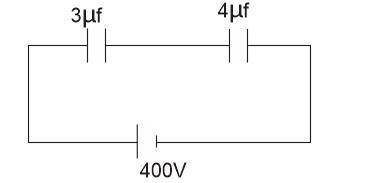
Physics Questions and Answers
If you want to learn more about the nature and properties of matter and energy or you're simply preparing for a Physics exam, these Physics past questions and answers are ideal for you.

If you want to learn more about the nature and properties of matter and energy or you're simply preparing for a Physics exam, these Physics past questions and answers are ideal for you.
An alternating current can induce voltage because it has
ripple value
varying magnetic field
weaker magnetic field than direct current
high peak value
Correct answer is B
As induced voltage is produced by varying magnetic field. The induced voltage is proportional to the rate of change of magnetic flux linking the coil.
100\(^o\)C
248\(^o\)C
250\(^o\)C
350\(^o\)C
Correct answer is C
t\(_\theta\) - t\(_o\) = 10,
t\(_{100}\) - t\(_o\) = 4
| θ | = | t\(_\theta\) - t\(_o\)
t\(_{100}\) - t\(_o\) |
× | 100 |
| 10
4 |
× | 100 | = | 250°C |
5Hz
6Hz
5.2Hz
25Hz
Correct answer is A
\(V = \frac{Distance}{time}\)
= \(\frac{50cm}{2s}\)
= 25 cms\(^{-1}\).
\(V = f \lambda\)
\(f = \frac{V}{\lambda}\)
\(f = \frac{25}{5}\)
= 5 Hz
A supply of 400V is connected across capacitors of 3μf and 6μf in series. Calculate the charge
8 x 10\(^{-4}\)C
4 x 10\(^{-2}\)C
8 x 10\(^{-3}\)C
4 x 10\(^{-8}\)C
Correct answer is A

| C\(_T\) | = | C\(_1\) × C\(_2\)
C\(_1\) + C\(_2\) |
| = | 3 × 6
3 + 6 |
= \(\frac{18}{9}\) = 2μf
Q = CV
⇒ 2 × 10\(^{-6}\) × 400
⇒ 800 × 10\(^{-6}\)C = 8 × 10\(^{-4}\)C

At J, the wire becomes plastic
J is the yield point
L is the elastic limit
At K, the wire breaks
Correct answer is B
- I is the elastic limit
- the end of the constant part J is the yield point
- L is the break point.